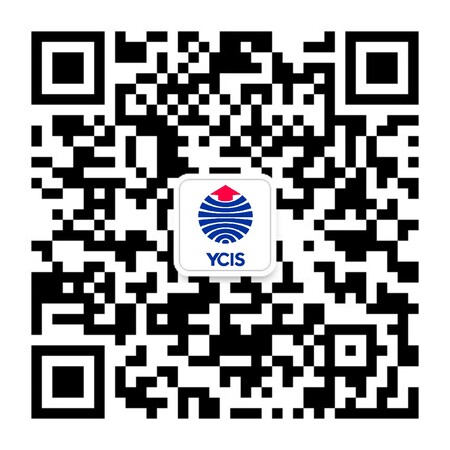Go Back
News
News
A Terrific Scientific Week!
News
29 Jun, 2018
10 : 00
Last week, five professional scientists were welcomed to Yew Chung International School of Beijing to lead talks with our Primary students. The purpose of the talks was to delve deeper into specific scientific areas, opening our students’ eyes to the fields of scientific research.
“It is important for our students to see that an interest in space, insects, fossils or dinosaurs can be pursued right into adulthood, and that one day they could even make ground-breaking discoveries themselves,” said Ms Farah Sun, Head of Science at YCIS Beijing.
Each visiting scientist gave their presentations to small groups of Primary students, allowing for more detailed group discussion and a chance to field questions and comments from our curious budding scientists.
Dr James E. Wicker: The Life Cycle of Stars
The first of these guest lectures was given by Dr James E. Wicker. Dr Wicker first came to China to analyse, amongst other things, data from LAMOST – the largest spectral telescope in the world, located in Hebei Province. Currently he is Editor of the international journal Research in Astronomy and Astrophysics.
Dr Wicker led a fascinating presentation with our Primary students on stars. They first discussed constellations, and our YCIS Beijing students impressed with their knowledge of the constellation names in both English and Chinese.
A main area of discussion was the life cycle of stars. Students learned how, when some stars begin to run out of fuel, they expand to become enormous Red Super Giants. When these giants reach the end of their lives, they explode in what Dr Wicker described as the “biggest explosion that ever happens in our universe” – a supernova. This explosion can lead to a very interesting thing: a black hole. The gravity of black holes is so strong that even light cannot escape.
Dr Tamer Tolba: Making Cosmic Rays Visible
Dr Tamer Tolba, Senior Researcher at the Institute of High Energy Physics at CAS, conducted an experiment with the Primary students in order to make visible the cosmic rays that radiate from outer space. The device used is known as a cloud chamber, and uses evaporated ethanol to make a cloud when particles pass through it. Charged particles, such as cosmic rays, also produce a track of vapour in the chamber as they pass through – producing visible evidence of radiation from outer space. Students were impressed to see that particles that have travelled through space from outside our solar system should be landing in our classrooms at YCIS Beijing!
Dr Jacob D. Wickham: An Encounter with Insects
Dr Jacob D. Wickham, Assistant Professor in the Chemical Ecology of Forest Insects Group at the Institute of Zoology, CAS, and Managing Editor of the international journal Integrative Zoology, led one of his ever-popular sessions on entomology for our Primary students. Dr Wickham has spent a lifetime collecting insect specimens from around the world. As well as the extraordinary specimens, his living insects also attract a lot of attention!
With our students he discussed habitats, lifecycles and characteristics and also showed students how to build simple insect traps at home. There is no shortage of opportunities to learn in Beijing, and our students were encouraged to turn to their surroundings for scientific inspiration.
Dr Melinda A. Yang: Making Fossils
Dr Melinda A. Yang, also based at CAS, is a researcher at the Molecular Palaeontology Lab at the Institute of Vertebrate Palaeontology and Palaeoanthropology. Dr Yang told students that China is home to some of the oldest human remains outside of Africa – and has provided scientists with important clues regarding the development and movement of Homo sapiens around the globe.
Dr Yang, whose area of expertise lies in fossils, carried out a fun fossil-making activity with our students that allowed them to take home their very own fossilised shells using clay and plaster.
Dr Jingmai O’Connor: The Dinosaurs That Didn’t Die
Dr Jingmai O’Connor, Senior Professor at the Institute of Vertebrate Palaeontology and Palaeoanthropology, finished the week with a fascinating lecture on the evolution of dinosaurs to birds.
Dr O’Connor had some exciting news to share: dinosaurs are not extinct – in fact, all birds are descended from dinosaurs! This was brought to life when students compared a modern day pigeon skeleton with the skeleton of a Deinonychus dinosaur – the shape of the neck, the shape and number of the toes, even the wish bones are common to both creatures.
Some more remarkable fossils even show dinosaurs behaving in the same way as our modern day birds – incubating their eggs, and tucking their heads under their wings as they sleep. These ground-breaking recent discoveries, to which Dr O’Connor has herself contributed, have led scientists to conclude that, while some groups of dinosaurs were extinct, one group lived on to evolve into today’s birds.
“The week of guest lectures was an outstanding success and certainly captured the imagination of our students”, said Ms Sun. “We are very fortunate to have these leading experts on our doorstep, and we are very much looking forward to inviting them back so that they can continue inspiring our students with their pioneering work.”












